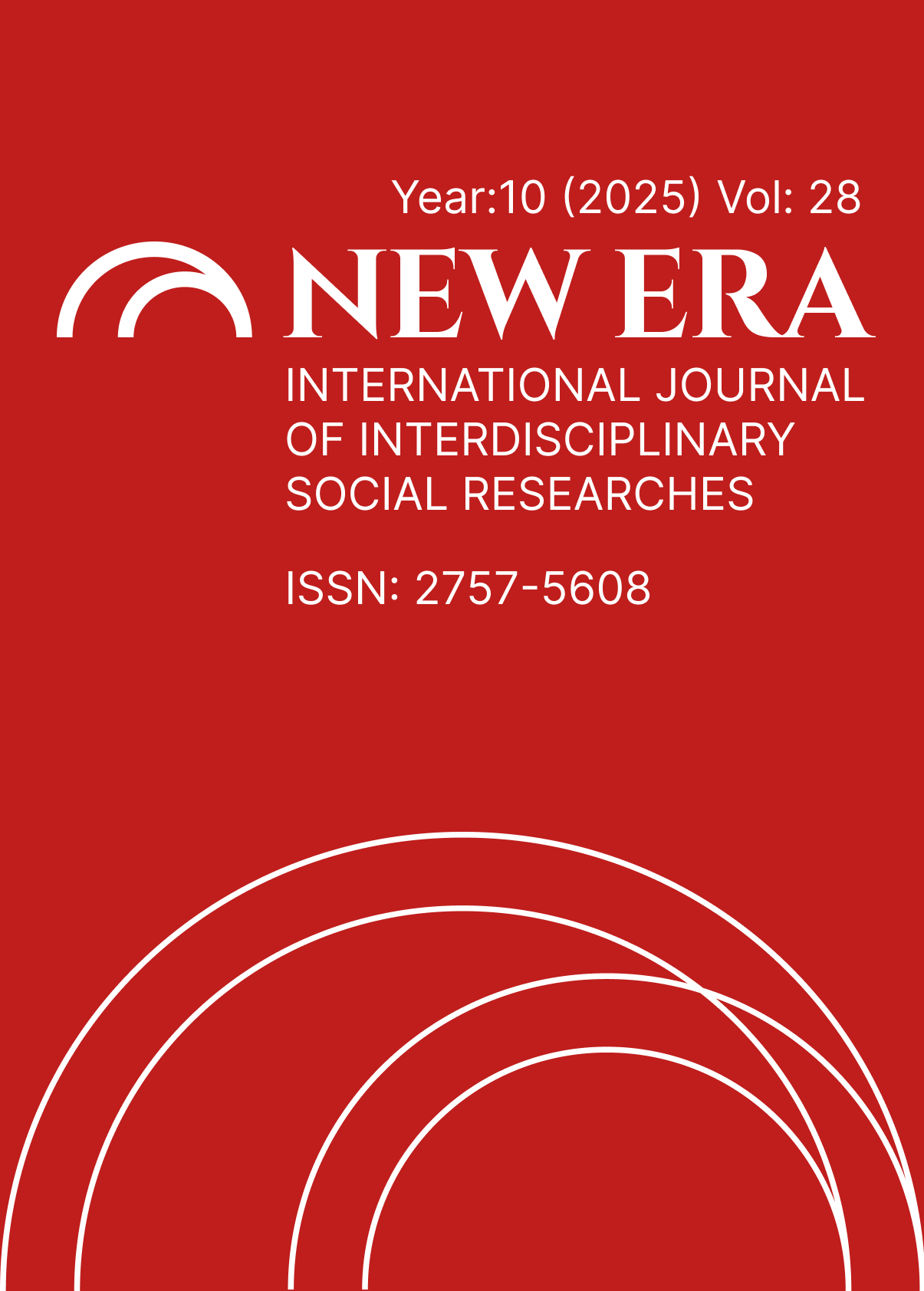LOCAL ACTIONS GROUPS: SALIPAZARI LOCAL ACTION GROUP ASSOCIATION EXAMPLE
DOI:
https://doi.org/10.5281/zenodo.15315176Keywords:
Local Action Group, Rural Development, Participatory Governance, LEADER ApproachAbstract
Local Action Groups (LAGs) are organizational structures based on a multi-actor, participatory and sustainable approach to local development. These groups are formed through the voluntary collaboration of public institutions, private sector representatives, and civil society organizations operating or residing within a specific geographical region. Their primary objective is to plan, implement, and monitor projects that support the social, economic, environmental, and cultural development of their respective regions.
LAGs are typically established as associations (NGO status) and operate under the principles of the LEADER approach (Liaison Entre Actions de Développement de l'Économie Rurale), which is a part of the European Union’s Rural Development Policy. The LEADER methodology promotes a “bottom-up” model of development, enabling local stakeholders to participate directly in decision-making processes. This framework allows LAGs to produce innovative, sustainable, and locally tailored solutions to development challenges while fostering cooperation and knowledge-sharing among diverse actors.
In Turkey, a total of 48 Local Action Group (LAG) Associations have been established across 12 provinces. These associations are community-led development organizations formed in line with the European Union’s rural development policies, aiming to promote bottom-up participation and cooperation among local stakeholders. Among the 48 LAGs, 8 have been established in the province of Samsun, highlighting its leading role in the implementation of rural development initiatives.
This study focuses on the activities of the Salıpazarı Local Action Group Association (SALYEGDER), one of the Local Action Group (LAG) associations established in the province of Samsun. The primary aim of the research is to conduct a multidimensional analysis of the projects implemented by SALYEGDER, its organizational structure, and its contribution to local development processes. Within this framework, the study evaluates how LAGs promote community participation in decision-making processes, their role in building social capital in rural areas, and the extent to which they contribute to regional development goals. The activities carried out in Salıpazarı serve as a case through which the local implications and implementation processes of the LEADER approach are critically examined.
References
Altieri, M. A., & Nicholls, C. I. (2017). The adaptation and mitigation potential of traditional agriculture in a changing climate. Climatic Change, 140(1), 33–45.
Atalık, G., & Yıldırım, B. (2019). Yerel Eylem Grupları ve kırsal kalkınma üzerine bir değerlendirme. Yerel Yönetimler Dergisi, 25(2), 45–60.
Avrupa Birliği Bakanlığı. (2015). IPA nedir? https://www.ab.gov.tr
Dax, T., & Oedl-Wieser, T. (2016). Rural innovation activities as a means for changing development perspectives – An assessment of more than two decades of promoting LEADER initiatives across the European Union. Studies in Agricultural Economics, 118(1), 30–37.
European Commission. (2006). The LEADER approach: A basic guide. Office for Official Publications of the European Communities.
European Commission. (2022). LEADER Approach: A guide for local development. Brussels: European Union Publications.
European Network for Rural Development. (2017). The importance of branding and geographical indications for rural development.
European Network for Rural Development. (2021). Social inclusion in rural areas: A focus on LEADER.
FAO. (2014). Building a common vision for sustainable food and agriculture: Principles and approaches. Food and Agriculture Organization of the United Nations.
Gülçubuk, B. (2016). Kırsal kalkınmada yerel eylem gruplarının rolü. K. Demir (Ed.), Kırsal kalkınma ve yoksullukla mücadele politikaları (ss. 123–145). Ankara Üniversitesi Yayınları.
Hazine ve Maliye Bakanlığı. (2020). KDV istisna sertifikası rehberi. https://www.gib.gov.tr
İktisadi Kalkınma Vakfı. (2023). IPARD III programı yayımlandı. https://www.ikv.org.tr
Keleş, R. (2004). Kentleşme politikası (9. b.). İmge Yayınları.
Külekçi, M. (2010). Kırsal kalkınma politikalarında sürdürülebilirlik ve Türkiye örneği. Ankara Üniversitesi Sosyal Bilimler Dergisi, 67(2), 101–123.
OECD. (2006). The new rural paradigm: Policies and governance. OECD Publishing.
OECD. (2020). Rural Well-being: Geography of Opportunities. OECD Publishing.
Orta Karadeniz Kalkınma Ajansı. (2018). Salıpazarı ilçe raporu. https://www.oka.gov.tr
Orta Karadeniz Kalkınma Ajansı. (2024). Faaliyet raporları ve etkinlik duyuruları. https://www.oka.gov.tr
Özdemir, E., & Gövdere, B. (2020). Coğrafi işaretlerin kırsal kalkınma üzerindeki etkisi: Türkiye örneği. Uluslararası Tarım ve Yaban Hayatı Bilimleri Dergisi, 6(1), 89-99.
Öztürk, M. (2020). Kırsal kalkınmada katılımcı yaklaşımlar ve LEADER deneyimi. Kalkınma Dergisi, 8(1), 75–92.
Resmî Gazete. (2024). https://www.resmigazete.gov.tr
Samsun İl Kültür ve Turizm Müdürlüğü. (2024). Tanıtım ve Medya Faaliyetleri Raporu.
Salıpazarı YEG. (2024). 2024 Uygulama Takvimi ve Finansal Planlama Raporu.
Tarım ve Kırsal Kalkınmayı Destekleme Kurumu. (2020). LEADER tedbiri sözleşme işlemleri rehberi. https://www.tkdk.gov.tr
Tarım ve Kırsal Kalkınmayı Destekleme Kurumu. (2023). LEADER yaklaşımı ve YEG’ler. https://www.tkdk.gov.tr
Tarım ve Kırsal Kalkınmayı Destekleme Kurumu. (2024a). IPARD III programı – 2021–2027 dönemi. https://www.tkdk.gov.tr
Tarım ve Kırsal Kalkınmayı Destekleme Kurumu. (2024b). 2024 Yılı uygulama planı. https://www.tkdk.gov.tr
T.C. Tarım ve Orman Bakanlığı. (2023). IPARD programı tanıtımı. https://www.tarimorman.gov.tr
T.C. Tarım ve Orman Bakanlığı. (2024). Kooperatifçilik eğitim notları ve uygulama kılavuzu. https://www.tarimorman.gov.tr
Tarım Reformu Genel Müdürlüğü. (2024). Türkiye Ortak Tarım Politikası Ağı Yerel Eylem Grubu El Kitabı. T.C. Tarım ve Orman Bakanlığı.
Türkiye İstatistik Kurumu (2024). https://www.tuik.gov.tr
Downloads
Published
How to Cite
Issue
Section
License
Copyright (c) 2025 NEW ERA INTERNATIONAL JOURNAL OF INTERDISCIPLINARY SOCIAL RESEARCHES

This work is licensed under a Creative Commons Attribution-NonCommercial 4.0 International License.


